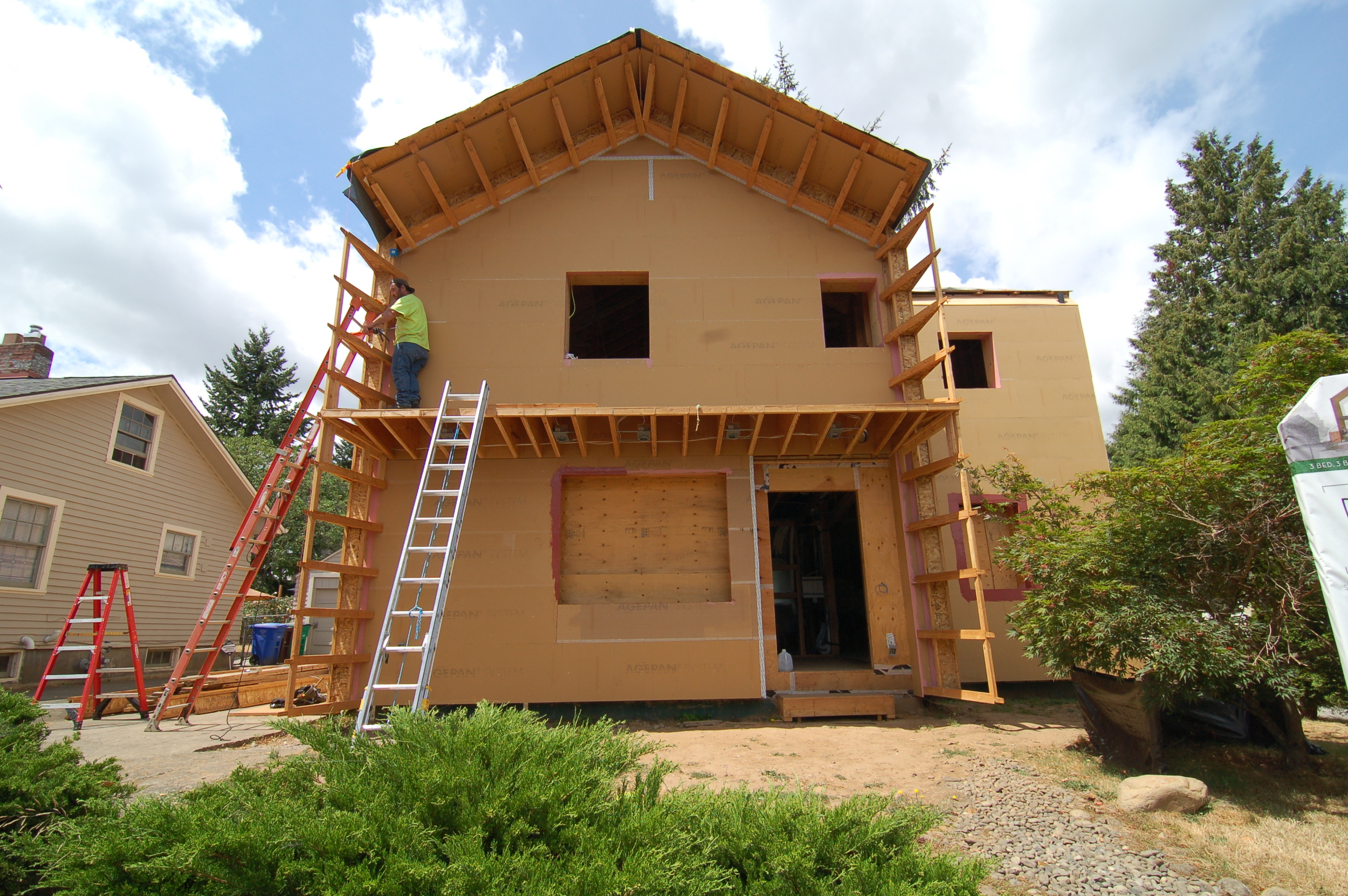
Once we had the air barrier and the TJIs in place, we needed to have a weather barrier over the TJIs to protect the house and to hold in the cellulose insulation. We spent a lot of time going back and forth over this and with some help from Albert at Small Planet Supply and some testing on our part, we decided that a material called Agepan was the best product for our weather resistant barrier (WRB).
Agepan is a wax-impregnated wood fiberboard material that has a perm rating of 18 (Must Keep Assembly Vapor-Open!). It gives us a small bump in our R-value for the assembly, but it's real value is in its water management abilities. Even though it looks a bit like simple particle board (which you never want to get wet) it functions in a very different way. We did a test (not particularly scientific) whereby we turned a glass of water over on a sample of the material and waited to see how long it would take for the water to seep into the product and wet the other side. After 3 weeks of watching the test in our office, it still didn't show any signs at all of the water leaching into the material, let alone to the other side. Talking to other contractors who have used this product, they had similar experiences as to how well this material performs as a weather barrier.
Agepan installs relatively easily due to its Tongue & Groove edges on all four sides. This T&G lets it be installed without having to have its edges land on the center of each stud in order to be strong enough. The T&G can hold itself together, basically. This is good because this is a product made in Europe (one of the few we used) and the size of the sheets are odd for U.S. construction standards.
I have to say that even with the T&G, the install was not quite as easy as we had hoped it would be. Large walls were easy enough until we got to the gables, where we were having to make angled cuts. Since the sheets are so short (25" tall x 90" wide) we had twice as many cuts as we would have with a typical 4x8 sheet good. Also, once we got to areas that were shorter in width, it turned in to a lot more cutting there too. Once it is cut, there is no T&G there obviously, so that butt joint needs to be addressed with sealant and tape just like any other sheet good would have to be.
“Slippery as Snot!”
Another negative for the product is that its waxy factory-delivered surface that is designed to shed water also sheds people quite well too!
The framers who installed the material on the roof for us found out quick that great care needs to be taken in where you put your feet on this stuff. Our 5:12 & 6:12 pitched roofs created a tough situation for them, and the dust remaining on the board from cutting made the install treacherous & slow-going.
All in all, I like the material a lot and I am glad we used it over a membrane material, but the added cost of time, material & labor will make me consider a Siga Majvest, or other membrane material on future jobs.
